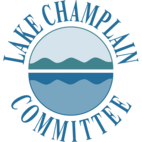Rainbows

October 2009
In early October, a rare meteorological phenomenon provided a treat for people lucky enough to be near the Crown Point Bridge. The waters north of the bridge became suffused with rainbow colors. Though everyone is familiar with rainbows arcing in the sky, seeing them sitting atop the water is much less common.
Rainbows form when the sun’s rays pass through water droplets and reflect back to an observer. Once the light enters the water droplet it bends, with different wavelengths varying in the degree to which they are bent. Reds bend 42 degrees while blues bend about 40 degrees. The light then bounces off the back of the water. Thus in order to see a rainbow, light must shine from behind the observer while water droplets are in the air in front of the observer.
In order to see the different colors of the rainbow, light must reflect off different water droplets. Those slightly higher in the atmosphere reflect reds, while the lowest droplets reflect blues.
The location of the rainbow depends upon the position of the water droplets and the height of the sun. The rainbow’s distance from the observer is determined by how far away the water droplets are. The arc of the rainbow centers on the shadow of the observer’s head, sitting about 42degrees above the shadow. As the sun climbs in the sky, the rainbow becomes shorter and shorter, just as the observer’s shadow does. If the sun is more than 42 degrees above the horizon, the rainbow sits below the horizon, and is usually not visible. Exceptions sometimes occur when the observer looks down toward the water droplets reflecting light such as from an airplane or atop a waterfall.
The Crown Point rainbow was one of these exceptions. It occurred near noon, with a sun approximately 40 degrees above the horizon. At that angle, any rainbow formed would be quite near the surface of the ground. Because I was travelling over the Crown Point Bridge I was above the horizon and thus the rainbow appeared to sit directly on the surface of the water.
Additionally, the storm clouds that produced the water droplets were very close. It was probably raining in Panton, VT while Port Henry, NY was just drying off. Rainbows are more likely to follow rainstorms than precede them. Prior to the storm, the shadow of the clouds prevents sufficient light from reaching the water droplets. The nearness of the storm meant the rainbow appeared close by.
Rainbows on lakes were apparently first described in 1868. They seem to be seen most frequently (thought not exclusively) in autumn. A 1916 paper on the subject identified four criteria for their formation: 1) a scum or film on the water, 2) a fog to deposit minute water drops on the film, 3) perfectly calm water, and 4) bright sun. The great lake scientist G. Evelyn Hutchinson noted, “Very occasionally horizontal rainbows can be seen on lake surfaces. They are apparently formed in the same way as are ordinary rainbows, by refraction in droplets of mist stuck to the oily surfaces of lakes that have produced much plankton.” I was unable to determine if an excess of plankton or other scum aided the formation of the Crown Point rainbow, and there was no fog. Rather, I suspect the simple abundance of water droplets from the very nearby storm was sufficient to induce the event.
Legend holds that the leprechaun keeps his gold at the end of the rainbow. The devious little creature knows that no one can ever reach the end of the rainbow because it will continue to retreat before you. However, the Crown Point rainbow did indeed cover the region’s gold, Lake Champlain itself.
Lake Look is a monthly natural history column produced by the Lake Champlain Committee (LCC). Formed in 1963, LCC is the only bi-state organization solely dedicated to protecting Lake Champlain’s health and accessibility. LCC uses science-based advocacy, education, and collaborative action to protect and restore water quality, safeguard natural habitats, foster stewardship, and ensure recreational access.
Get involved by joining LCC using our website secure form (at www.lakechamplaincommittee.org), or mail your contribution (Lake Champlain Committee, 208 Flynn Avenue - BLDG 3 - STUDIO 3-F, Burlington, VT 05401), or contact us at (802) 658-1414, or lcc@lakechamplaincommittee.org for more information.
